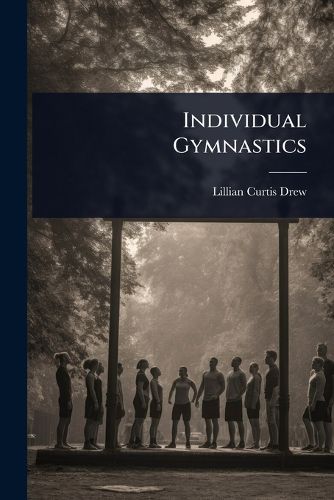Readings Newsletter
Become a Readings Member to make your shopping experience even easier.
Sign in or sign up for free!
You’re not far away from qualifying for FREE standard shipping within Australia
You’ve qualified for FREE standard shipping within Australia
The cart is loading…






Individual Gymnastics: A Handbook of Corrective and Remedial Gymnastics, by Lillian Curtis Drew, offers a comprehensive guide to therapeutic exercise. Originally published in 1922, this book provides detailed instructions and illustrations for exercises designed to correct physical ailments and improve overall health. Drew's work emphasizes personalized approaches to gymnastics, making it a valuable resource for individuals seeking to address specific physical needs through targeted movements.
This vintage manual covers a wide range of exercises and techniques, offering insights into the principles of physical therapy and rehabilitation practices of the early 20th century. It remains a fascinating look at the history of physical fitness and a useful reference for those interested in the foundations of corrective exercise.
This work has been selected by scholars as being culturally important, and is part of the knowledge base of civilization as we know it. This work was reproduced from the original artifact, and remains as true to the original work as possible. Therefore, you will see the original copyright references, library stamps (as most of these works have been housed in our most important libraries around the world), and other notations in the work.
This work is in the public domain in the United States of America, and possibly other nations. Within the United States, you may freely copy and distribute this work, as no entity (individual or corporate) has a copyright on the body of the work.
As a reproduction of a historical artifact, this work may contain missing or blurred pages, poor pictures, errant marks, etc. Scholars believe, and we concur, that this work is important enough to be preserved, reproduced, and made generally available to the public. We appreciate your support of the preservation process, and thank you for being an important part of keeping this knowledge alive and relevant.
$9.00 standard shipping within Australia
FREE standard shipping within Australia for orders over $100.00
Express & International shipping calculated at checkout
Individual Gymnastics: A Handbook of Corrective and Remedial Gymnastics, by Lillian Curtis Drew, offers a comprehensive guide to therapeutic exercise. Originally published in 1922, this book provides detailed instructions and illustrations for exercises designed to correct physical ailments and improve overall health. Drew's work emphasizes personalized approaches to gymnastics, making it a valuable resource for individuals seeking to address specific physical needs through targeted movements.
This vintage manual covers a wide range of exercises and techniques, offering insights into the principles of physical therapy and rehabilitation practices of the early 20th century. It remains a fascinating look at the history of physical fitness and a useful reference for those interested in the foundations of corrective exercise.
This work has been selected by scholars as being culturally important, and is part of the knowledge base of civilization as we know it. This work was reproduced from the original artifact, and remains as true to the original work as possible. Therefore, you will see the original copyright references, library stamps (as most of these works have been housed in our most important libraries around the world), and other notations in the work.
This work is in the public domain in the United States of America, and possibly other nations. Within the United States, you may freely copy and distribute this work, as no entity (individual or corporate) has a copyright on the body of the work.
As a reproduction of a historical artifact, this work may contain missing or blurred pages, poor pictures, errant marks, etc. Scholars believe, and we concur, that this work is important enough to be preserved, reproduced, and made generally available to the public. We appreciate your support of the preservation process, and thank you for being an important part of keeping this knowledge alive and relevant.